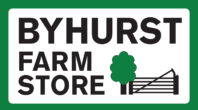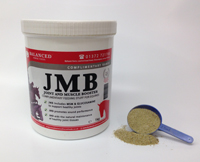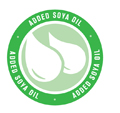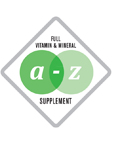Feeding The Performance Horse
The biggest variable when choosing a feed for a performance horse is energy.
Whilst scientific research can lead us to the knowledge of the correct levels of micronutrients and protein to be fed, based on bodyweight, breed, work level etc, energy remains the biggest variable.
The amount of energy, and also the type of energy to feed to the horse needs to be decided by the rider, owner, and keeper of the horse.
Energy can come from many different sources, but for practical reasons it is easy to split energy down into two different types; Quick Release Energy and Slow Release Energy.
Quick Release Energy
This form of energy comes from simple carbohydrates, sugars and starches, such as oats, barley, maize etc. also known as cereals. As the horse chews and breaks down his food he creates a bolus (ball) of food and together with enzymes from the saliva these are pushed down to the stomach by muscular contractions called peristalsis.
These simple carbohydrates then get digested in the stomach and small intestine, also referred to as the ‘Fore Gut’, where the enzymes turn them into glucose which can be used straight away, or stored as glycogen in the muscles and then broken down as required.
It is well worth noting that glucose is the only fuel used by the horse’s nervous system, including the brain.
Balanced Horse Feeds Quick Release Energy Products
Competition Mix
Low Intake Competition Mix
High Performance Mix
Slow Release Energy
This form of energy comes from complex carbohydrates, fibre, such as hay, haylage, grass, oil, sugar beet and the other fibrous matters in the horse’s concentrate feed. Once the feed has passed through the stomach and the small intestine, the semi digested food ends up in the ‘Hind Gut’, made up of the caecum, large intestine, colon and rectum. The gut micro-organisms (bacteria), in the hind gut ferment the food creating volatile fatty acids (VFA’s) that are absorbed by the horse and used as slow release energy. It is also in the hind gut where the horse synthesises B Vitamins and Vitamin K, and also reabsorbs water and electrolytes.
Balanced Horse Feeds Slow Release Energy Products
High Fibre Competition Mix
N-Hance
Show Mix
Dual Energy Release
Using the latest advances in nutritional science, Balanced Horse Feeds also manufacture products that combine both Quick and Slow Release Energy. Using highly digestible fibre for Slow Release Energy such as high temperature dried grass, alfalfa, sugar beet and oil and combining them with Quick Release Energy in the form of bruised oats, cooked cereals and naked oats.
Balanced Horse Feeds Dual Release Energy Feeds
Show Mix H.E.
Xtreme Energy
Protein
The ‘dreaded’ word! Over the last few years protein has been given a bad reputation, being suggested as the cause for ‘fizzy’ horses or ponies. But like anything, when fed in moderation with a specially designed diet for your horse it can only do good.
Protein is the building blocks for muscles, and having the correct supply of good quality protein for performance horses is essential. With performance horses in such hard work more stress is placed on the muscles, and making sure that they have a good and correct supply of protein will help the muscles grow and repair, thus ending up with a stronger, fitter horse.
Minerals
These are vital for the support and development of the horses’ musculo-skeletal system. Calcium, the most well known mineral and one everyone is familiar with is one of the most vital. Whilst most horses reach 90-95% maturity by 4 years of age, their skeletal system doesn’t often reach full maturity until they are 6, and in some cases 8 years old. The skeletal system is not fixed, it is constantly moving and evolving, so a correct balance of calcium is essential for any hard working horse.
Underfeeding calcium can lead to horses withdrawing it from their bone deposits and this can lead to familiar injuries like splints and chips, and also we are now seeing more younger horses developing joint problems.
All products from Balanced Horse Feeds contain the correct balance of calcium when fed at the recommended levels, but other feedstuffs, like alfalfa chaff for example, can also be useful at providing additional calcium to the diet.
Electrolytes
These are important for performance horses to replace the three main minerals they loose through heavy sweating, potassium, sodium and chloride. The large surface area that a horse has means they have the potential to sweat a great deal, and not just in the hot summer months, but performance horses in the winter that are clipped, hunting horses for example, will sweat just as much, just look at the steam that comes off their body when they stop for a break.
It is important that we replace these important minerals that are lost through sweating, and most of the time this can be done very simply. A horse sweating for an hour can loose between 30-40g of potassium, and hay contains 2% potassium, this means that by feeding around 2kg hay, 40g of potassium will be replaced, this figure would have to be doubled (4kg) when feeding haylage because of the moisture content.
The other two minerals, sodium and chloride, can be easily replaced with common table salt. Most horses will loose around 20g of these minerals through heavy sweating, so adding a couple of teaspoons of salt per day will provide your horse with enough sodium and chloride.
Using an electrolyte supplement, Balanced Salts Replacer, then can be saved and used when the horse is travelling and competing hard.
All Balanced Horse Feeds performance feeds contain raised levels of salt to allow for heavy sweating when the horse is in hard work.
Antioxidants
Free Radicals are present in everyday life; they are damaged/corrupted molecules that are introduced to the horse via oxygen. These free radicals attach themselves to the healthy cells in the horses’ body creating a chain reaction and spreading throughout the horses’ body. The latest research points to the fact that most performance horses are prime targets for free radicals, and often hold a heavy burden.
The most well know Antioxidants that we are familiar with in the horses’ diet are Vitamins C & E, and minerals Selenium and Zinc.
Antioxidants essentially “clean up” the free radicals and prevent them from spreading throughout the body.
All of Balanced Horse Feeds Performance Range feeds contain raised levels of antioxidants – Vitamin E and Selenium.
B Vitamins
These are essential for aiding the metabolism of fats and carbohydrates, they help the horse to properly utilise energy. The best source of B Vitamins is pasture, and as stated before, the horses’ hind gut bacteria will synthesise these. Yeast, Alfalfa and molasses are other common composition that can also provide the horse with B Vitamins. But understandably it is not always possible to give performance horses’ unlimited access to pasture, so all the Balanced Horse Feeds Performance Range feeds provide raised B vitamin levels to help the horse properly metabolise and utilise the energy that you are providing.







